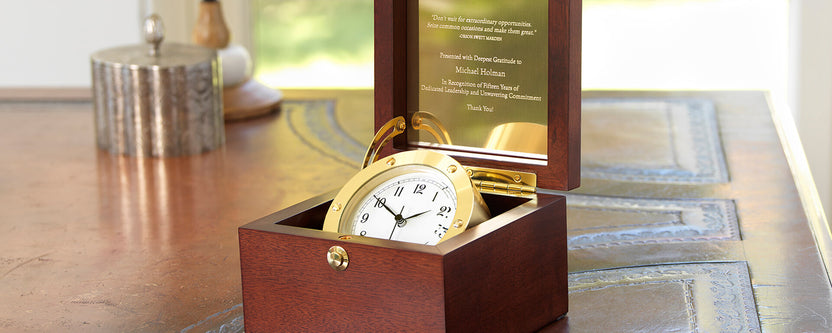Chelsea Clock: Crafting Precision Timepieces for American Adventure and Triumph
Chelsea Clock, founded in 1897 in Chelsea, Massachusetts, has built a century-long reputation for creating handcrafted, durable, and precise timepieces. Over the years, these clocks have played pivotal roles in some of America's most historic explorations and courageous feats. From helping Admiral Byrd navigate the South Pole to helping helping mariners cross vast oceans, Chelsea Clock timepieces have been more than mere instruments—they've been trusted companions in moments of American triumph and adventure.
The Founding and Craftsmanship of Chelsea Clock
Founded with a mission to create precision timepieces, Chelsea Clock has long been recognized for its craftsmanship and reliability. The company's clocks were soon found aboard naval vessels, in the White House, and in homes across the nation. What set Chelsea apart was not only its aesthetic design but its ability to withstand the harshest conditions, whether at sea, in the air, or on land. While other clocks may have buckled under harsh conditions, Chelsea clocks endured, a testament to the company’s exceptional craftsmanship even to this day.

Chelsea Clock in U.S. Coast Guard History
By the early 20th century, the U.S. military recognized the value of Chelsea’s precision timepieces. Chelsea Clocks became a staple aboard U.S. Navy and Coast Guard vessels, essential for navigation and coordination during peacetime and wartime. In particular, the U.S. Coast Guard has a long history with Chelsea, dating back to the early 1900s when the company crafted chronometers for the U.S. Life-Saving Service.
One of the most notable stories involves the 1952 rescue of the SS Pendleton crew off Cape Cod. During a fierce storm, Coast Guard coxswain Bernard Webber and his crew braved near-impossible conditions to save the ship’s stranded sailors. A Chelsea Clock timepiece recovered from the Pendleton is now a symbol of their bravery, on display in Orleans, MA.
Chelsea Clock and Antarctic Exploration
Chelsea Clock also played a crucial role in the exploration of remote regions. In 1928, Admiral Richard Byrd used a Chelsea Clock Ship's Bell on his historic South Pole expedition. Withstanding the brutal cold of Antarctica, the clock helped Byrd and his team navigate and coordinate their movements, ensuring the expedition’s success. Byrd later wrote to the company, thanking Chelsea for the clock’s role in his groundbreaking achievement.

The Brigantine "Yankee" and Global Circumnavigation
In the mid-20th century, explorers Irving and Electa Johnson embarked on four global circumnavigations aboard the Brigantine Yankee. A Chelsea Ship's Bell was essential to managing the ship’s rigorous schedule and crew routines during their 18-month voyages. The clock became an anchor in time for each around the world voyage, helping the crew navigate the vast oceans and marking each passing day.
Chelsea Clock: An Enduring Symbol of American Ingenuity
Today, Chelsea Clock remains an enduring symbol of American craftsmanship and resilience. Its timepieces, crafted with meticulous care, serve as reminders of the brave individuals who relied on them during some of the nation's most significant moments of exploration and courage. Whether in the freezing cold of Antarctica, the stormy seas of the Atlantic, or aboard a ship navigating the globe, Chelsea Clocks remain a trusted companion in the journey.








